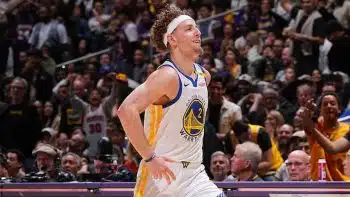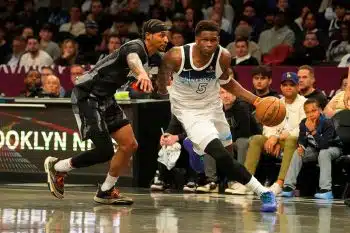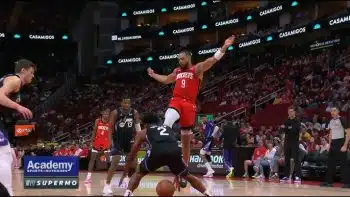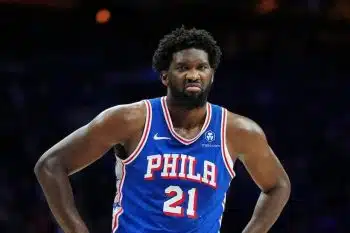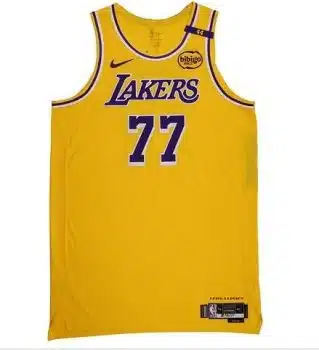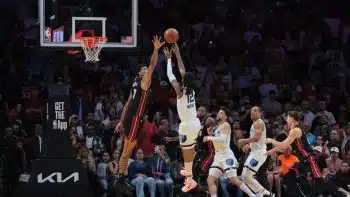NBA
How the NBA’s Top Shooters Do Their Damage
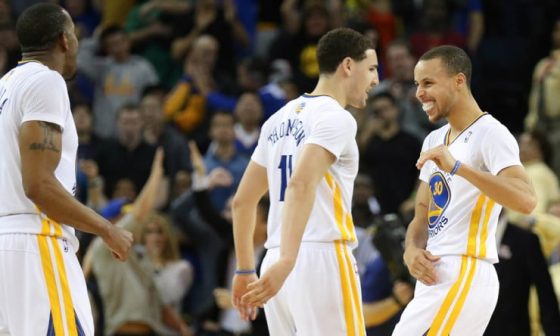
The three-point shot has become a centerpiece of basketball. Even though shooters typically aren’t as tall, strong or athletic as their peers, they can make just as much (or even more) of an impact on a game, particularly in today’s NBA.
The three-point shot stretches the defense, creating driving lanes for guards, and in recent years we’ve seen a new era of the stretch-four. These days (with a few exceptions) teams want a power forward who can shoot from mid-to-long range. The three-point line can swing games as a player can get hot and knock down several in a row, shifting momentum. That arc can help eliminate deficits in a matter of minutes, making games closer and more exciting. It’s also exhilarating to watch the automatic and effortless accuracy of these sharpshooters.
How do they do their damage? Some players like the corners (some because it’s a shorter shot, some because you can lose your defender if you drift there). Others like the top of the key. Some players like doing their damage off pull-ups, while others would prefer to catch-and-shoot.
Let’s break down how these shooters operate. While our list is in order of made threes so far in 2015-16, it’s not a ranking of the best three-point shooters. It is just about delving into the top shooters who do their damage from deep and seeing how they are so effective. All statistics are through NBA.com and their player tracking software or ESPN, while the shot charts are via StatMuse.
Some usual suspects are missing from this list because they missed time and haven’t been in enough games to make the list. This includes J.J. Redick, Kyle Korver and Kevin Durant.
Redick has only played in 18 games this season for the Los Angeles Clippers, but the sharpshooter is still shooting at an elite level with a 45.2 percentage from deep. He just doesn’t have enough volume to make the list. Redick is a catch-and-shoot specialist, as 33.3 percent of his shots come right off a pass behind the line, where he shoots 48.4 percent. He subscribes to the Ray Allen school of three-point shooters by running all around the court and getting screened by his teammates. He shoots 45.9 percent overall following a screen.
Korver also loves running off screens, where he shoots 50 percent. On the year, he is shooting 41.2 percent from behind the arc in 21 games for the Atlanta Hawks. Korver shoots 47.5 percent of his shots on catch-and-shoot three-pointers and makes 41.6 percent of them.
Durant only shoots 21 percent of his shots right off the catch, but converts on 49.1 percent of them. In total, 33.9 percent of his shots are from deep and he converts 45.7 of them for the Oklahoma City Thunder. Durant has only played 15 games so far.
Expect all three of these players to jet up the three-point rankings. By the end of the season, all of them will probably be in the top 10 in three-point makes, barring injury.
Brandon Knight (Phoenix Suns)
Knight looks like he is finally healthy and finding his groove after being traded to Phoenix last season then subsequently sustaining an injury. He is seventh in the league in made threes with 57. As he is being asked to carry the offense more this season, he is averaging more shot attempts overall and more threes, which is why his three-point percentage has dipped to 37.5 percent. Three-pointers make up 37.7 percent of Knight’s shot attempts.
He shoots 40.3 percent off the catch, which accounts for 16.7 percent of his shots – while 20.7 percent of his shots come off of pull-up jumpers from behind the arc, where he converts 34.9 percent.
In terms of where he likes to shoot his three-pointers, his favorite spot seems to be the left wing as seen in the shot chart.
James Harden (Houston Rockets)
Harden shoots 41.9 percent of his shots from behind the line and converts 31.3 percent of them, which is bad for the usual player, but not for someone with his usage. He is a volume scorer who carries the offensive load for the Houston Rockets. With the amount of shots he takes, 8.5 threes a game, it isn’t too surprising he is sixth in the NBA in made threes with 61.
Harden shoots 15.9 percent of his shots as catch-and-shoot threes, where he converts 35.1 percent of them. Everyone knows he likes to isolate his defender and take them one-on-one. He isolates on 29.4 percent of his shots (the highest percentage of all qualified players). On those pull-up jumpers (defined by taking at least one dribble before shooting), Harden takes 24.3 percent of his shots that way from behind the three-point line and makes only 29.2 percent of them. Most good shooters are at their best in catch-and-shoot situations. Harden shoots slightly better when he dribbles seven or more times first. He shoots 34.1 percent off-the-catch and 38.1 percent after seven or more dribbles. He shoots 43.8 percent after two dribbles from three-point range. Weirdly, his percentages go way down (20 percent or lower) when taking either one or between three and six dribbles.
Most often (20.9 percent of his threes), Harden is just open (defined by a defender being 4-6 feet from him), where he shoots 33 percent. He’s slightly better (34.3 percent) when he is being tightly defended (opponent is within two to four feet). Harden seems to favor the right wing for his threes, practically leaving the left wing alone. It makes some sense since he is left-handed.
Damian Lillard (Portland Trail Blazers)
Now that Lillard is the marquee player for Portland, his usage rating went way up. His currently has the sixth-highest usage in the league, which is why his three-point efficiency has decreased to 37.4 percent. But due to the high volume, he is fifth in the league in three-pointers made with 67.
This year, 21.3 percent of Lillard’s shots come on pull-up jumpers from deep, where he shoots 32.7 percent. Only 16.5 percent of his shots come right after the catch, but he converts 44.7 percent of them.
Like Harden, Lillard likes to dribble before pulling up on his three-pointers. Only a combined 3.5 percent of the time will he take one or two dribbles before pulling up for a three. However, 7.8 percent of the time, he’ll take three to six dribbles before he shoots, where he converts 41.7 percent of the time. Other times, Lillard will take seven or more dribbles (10 percent of the time) before taking a three, and he makes 37 percent of those.
As for Lillard’s favorite spot to shoot from deep, he tends to like the top of the arc (but just offset to the left).
Klay Thompson (Golden State Warriors)
Thompson had a quiet start to the season, but has come on strong lately – including a strong 39-point performance against the Indiana Pacers. Thompson had eight three-pointers in the first half, and if it had been a closer game (giving Thompson enough minutes and reason to shoot more), he probably would have broken the all-time NBA record for three-pointers in a game. He made two more three-pointers that game for a grand total of 10 from behind the line, falling just two short of the record held by both Kobe Bryant and Donyell Marshall.
Thompson is fourth in NBA in made three-pointers with 68. He hardly has the ball in his hands, as only six percent of his shots come from behind the line and in pull-up situations. He shoots 44.4 percent in those situations. His usual shots are off-the-catch, as those make up 42.6 percent of all his shots.
Thompson sure seems to favor both the right and left wings, almost to where the arc turns into the corner three-pointer.
Kyle Lowry (Toronto Raptors)
The new Lowry, who seems to have dropped a lot of weight and reinvigorated his career last offseason, is tied with Paul George for second in made three-pointers with 69.
Lowry has really upped his game, averaging more points per game, as well as attempting and making more three-pointers than last year. He’s increased his shooting behind the line by nearly eight percent from a sub par 33.8 percent to an elite 41.8 percent. Three-pointers now account for 46.1 percent of his field goals.
He has a good balance between catch-and-shoot threes (23.5 percent of all his shots) and pull-ups (22.1 percent). Lowry shoots only 32.6 percent on the latter category, but an impressive 52.4 percent on the former.
Lowry definitely favors the top of the key and the area right around there for his three-pointers.
Paul George (Indiana Pacers)
George has come back strong from his gruesome leg injury that occurred with Team USA two offseasons ago. He is carrying that Pacers team and making a case to be the best player in the Eastern Conference not named LeBron James.
He is tied for the second-most made three-pointers in the league in only 20 games (fewer games than anyone else in the top seven) with 69. Three-pointers account for 38.6 percent of George’s shots, and he converts at a 44.8 percent clip. Of those, 20.6 percent are off the catch (where he makes 53.7 percent) and 17.5 percent are pull-ups (where he converts 34.3 percent).
George really can shoot from everywhere around the arc, but his favorite spot seems to be the left wing.
Stephen Curry (Golden State Warriors)
Curry is in a tier of his own as a shooter. It’s amazing how effortless and efficient he makes knocking down threes look. A bad shot for most any NBA player, and every kid playing in the park, is a good shot for him.
First off is the sheer volume that Curry is making. George and Lowry have 69 makes from behind the arc. Curry has 119 already. He is 50 made threes ahead of the entire league. That’s the same difference between number one and two on the made threes list as between number two (Paul George and Kyle Lowry) and number 116 (Cleveland Cavaliers’ Richard Jefferson and Brooklyn Nets’ Bojan Bogdanovic), who currently have 19 made threes. Before Christmas, Curry is already 100 made three-pointers ahead of the average role player.
That’s only a quarter into the season, so his lead is probably going to increase. Keep in mind, he isn’t even playing a lot of fourth quarters. Curry is converting on 46.5 percent of his three-pointers. That is the third-best percentage among qualified players (those on pace to make 82 threes by the end of the season). The two players ahead of him are Kawhi Leonard (50 percent from three) and Doug McDermott (47.6 percent from three). The difference is Leonard and McDermott have attempted 84 and 63 three-pointers respectively — Curry has attempted 256.
Curry loves to pull up for his threes, as that accounts for 29 percent of his offense and he shoots an impressive 41.4 percent on those. He isn’t too bad in the easier off-the-catch shooting, where he shoots a predictably excellent 49.1 percent. He shoots 50 percent from deep when using no dribble or just one dribble.
It almost doesn’t matter how you guard him. Of course, if you leave him wide open (no one within six or more feet), he’ll hit 50.7 percent. If you leave most players, they will regress toward their average, but seemingly not Curry. If you leave him only marginally open (defender within four to six feet) he converts at an elite 43 percent. And if you guard him (defender between two to four feet), he’s even better (46.6 percent). You’d have to basically be standing right next to him to make him an only average (30.8 percent) shooter from behind the arc.
Curry’s shot chart is ridiculous. With Curry, it doesn’t really matter where outside the arc he is shooting from, he’s making it. He is shooting way above average from all around the court. If you had to pick his favorite spot, it would be the left wing and both corners, but he probably doesn’t have a preference.
